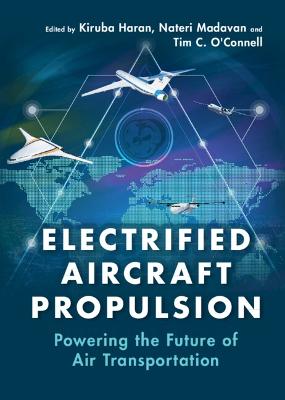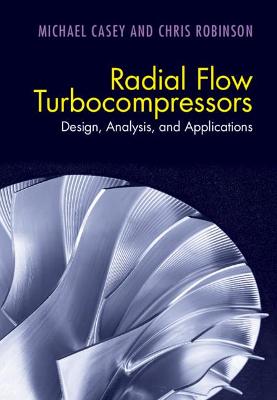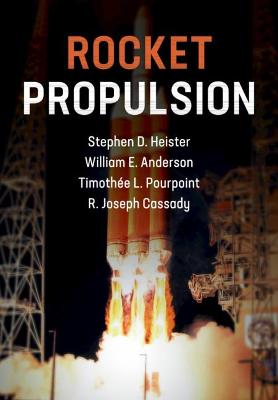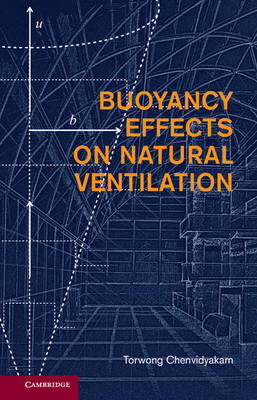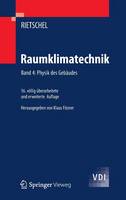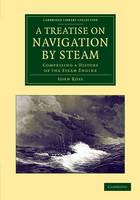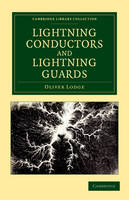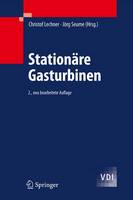Industrial Furnaces
 -15%
portes grátis
-15%
portes grátis
Industrial Furnaces
Trinks, W.; Garvey, J. R.; Shannon, R. A.; Reed, R. J.; Mawhinney, M. H.
John Wiley & Sons Inc
01/2004
496
Dura
Inglês
9780471387060
15 a 20 dias
850
Descrição não disponível.
1. INDUSTRIAL HEATING PROCESSES. 1.1 Industrial Process Heating Furnaces.
1.2 Classifications of Furnaces.
1.3 Elements of Furnace Construction.
1.4 Review Questions and Projects.
2. HEAT TRANSFER IN INDUSTRIAL FURNACES.
2.1 Heat Required for Load and Furnace.
2.2 Flow of Heat Within the Charged Load.
2.3 Heat Transfer to the Charged Load Surface.
2.4 Determining Furnace Gas Exit Temperature.
2.5 Thermal Interaction in Furnaces.
2.6 Temperature Uniformity.
2.7 Turndown.
2.8 Review Questions and Project.
3. HEATING CAPACITY OF BATCH FURNACES.
3.1 Definition of Heating Capacity.
3.2 Effect of Rate of Heat Liberation.
3.3 Effect of Rate of Heat Absorption by the Load.
3.3.1 Major Factors Affecting Furnace Capacity.
3.4 Effect of Load Arrangement.
3.5 Effect of Load Thickness.
3.6 Vertical Heating.
3.7 Batch Indirect-Fired Furnaces.
3.8 Batch Furnace Heating Capacity Practice.
3.9 Controlled Cooling in or After Batch Furnaces.
3.10 Review Questions and Project.
4. HEA TING CAPACITY OF CONTINUOUS FURNACES.
4.1 Continuous Furnaces Compared to Batch Furnaces.
4.2 Continuous Dryers, Ovens, and Furnaces for <1400 F (<760 C).
4.3 Continuous Midrange Furnaces, 1200 to 1800 F (650 to 980 C).
4.4 Sintering and Pelletizing Furnaces.
4.5 Axial Continuous Furnaces for Above 2000 F (1260 C).
4.6 Continuous Furnaces for 1900 to 2500 F (1038 to 1370 C).
4.7 Continuous Liquid Heating Furnaces.
4.8 Review Questions and Projects.
5. SAVING ENERGY IN INDUSTRIAL FURNACE SYSTEMS.
5.1 Furnace Efficiency, Methods for Saving Heat.
5.2 Heat Distribution in a Furnace.
5.3 Furnace, Kiln, and Oven Heat Losses.
5.4 Heat Saving in Direct-Fired Low-Temperature Ovens.
5.5 Saving Fuel in Batch Furnaces.
5.6 Saving Fuel in Continuous Furnaces.
5.7 Effect of Load Thickness on Fuel Economy.
5.8 Saving Fuel in Reheat Furnaces.
5.9 Fuel Consumption Calculation.
5.10 Fuel Consumption Data for Various Furnace Types.
5.11 Energy Conservation by Heat Recovery from Flue Gases.
5.12 Energy Costs of Pollution Control.
5.13 Review Questions, Problems, Project.
6. OPERATION AND CONTROL OF INDUSTRIAL FURNACES.
6.1 Burner and Flame Types, Location.
6.2 Flame Fitting.
6.3 Unwanted NOx Formation.
6.4 Controls and Sensors: Care, Location, Zones.
6.5 Air/Fuel Ratio Control.
6.6 Furnace Pressure Control.
6.7 Turndown Ratio.
6.8 Furnace Control Data Needs.
6.9 Soaking Pit Heating Control.
6.10 Uniformity Control in Forge Furnaces.
6.11 Continuous Reheat Furnace Control.
6.12 Review Questions.
7. GAS MOVEMENT IN INDUSTRIAL FURNACES.
7.1 Laws of Gas Movement.
7.2 Furnace Pressure; Flue Port Size and Location.
7.3 Flue and Stack Sizing, Location.
7.4 Gas Circulation in Furnaces.
7.5 Circulation Can Cure Cold Bottoms.
7.6 Review Questions.
8. CALCULATIONS/MAINTENANCE/QUALITY/SPECIFYING A FURNACE.
8.1 Calculating Load Heating Curves.
8.2 Maintenance.
8.3 Product Quality Problems.
8.4 Specifying a Furnace.
8.5 Review Questions and Project.
9. MATERIALS IN INDUSTRIAL FURNACE CONSTRUCTION.
9.1 Basic Elements of a Furnace.
9.2 Refractory Components for Walls, Roof, Hearth.
9.3 Ways in Which Refractories Fail.
9.4 Insulations.
9.5 Installation, Drying, Warm-Up, Repairs.
9.6 Coatings, Mortars, Cements.
9.7 Hearths, Skid Pipes, Hangers, Anchors.
9.8 Water-Cooled Support Systems.
9.9 Metals for Furnace Components.
9.10 Review Questions, Problem, Project.
GLOSSARY.
REFERENCES AND SUGGESTED READING.
INDEX.
1.2 Classifications of Furnaces.
1.3 Elements of Furnace Construction.
1.4 Review Questions and Projects.
2. HEAT TRANSFER IN INDUSTRIAL FURNACES.
2.1 Heat Required for Load and Furnace.
2.2 Flow of Heat Within the Charged Load.
2.3 Heat Transfer to the Charged Load Surface.
2.4 Determining Furnace Gas Exit Temperature.
2.5 Thermal Interaction in Furnaces.
2.6 Temperature Uniformity.
2.7 Turndown.
2.8 Review Questions and Project.
3. HEATING CAPACITY OF BATCH FURNACES.
3.1 Definition of Heating Capacity.
3.2 Effect of Rate of Heat Liberation.
3.3 Effect of Rate of Heat Absorption by the Load.
3.3.1 Major Factors Affecting Furnace Capacity.
3.4 Effect of Load Arrangement.
3.5 Effect of Load Thickness.
3.6 Vertical Heating.
3.7 Batch Indirect-Fired Furnaces.
3.8 Batch Furnace Heating Capacity Practice.
3.9 Controlled Cooling in or After Batch Furnaces.
3.10 Review Questions and Project.
4. HEA TING CAPACITY OF CONTINUOUS FURNACES.
4.1 Continuous Furnaces Compared to Batch Furnaces.
4.2 Continuous Dryers, Ovens, and Furnaces for <1400 F (<760 C).
4.3 Continuous Midrange Furnaces, 1200 to 1800 F (650 to 980 C).
4.4 Sintering and Pelletizing Furnaces.
4.5 Axial Continuous Furnaces for Above 2000 F (1260 C).
4.6 Continuous Furnaces for 1900 to 2500 F (1038 to 1370 C).
4.7 Continuous Liquid Heating Furnaces.
4.8 Review Questions and Projects.
5. SAVING ENERGY IN INDUSTRIAL FURNACE SYSTEMS.
5.1 Furnace Efficiency, Methods for Saving Heat.
5.2 Heat Distribution in a Furnace.
5.3 Furnace, Kiln, and Oven Heat Losses.
5.4 Heat Saving in Direct-Fired Low-Temperature Ovens.
5.5 Saving Fuel in Batch Furnaces.
5.6 Saving Fuel in Continuous Furnaces.
5.7 Effect of Load Thickness on Fuel Economy.
5.8 Saving Fuel in Reheat Furnaces.
5.9 Fuel Consumption Calculation.
5.10 Fuel Consumption Data for Various Furnace Types.
5.11 Energy Conservation by Heat Recovery from Flue Gases.
5.12 Energy Costs of Pollution Control.
5.13 Review Questions, Problems, Project.
6. OPERATION AND CONTROL OF INDUSTRIAL FURNACES.
6.1 Burner and Flame Types, Location.
6.2 Flame Fitting.
6.3 Unwanted NOx Formation.
6.4 Controls and Sensors: Care, Location, Zones.
6.5 Air/Fuel Ratio Control.
6.6 Furnace Pressure Control.
6.7 Turndown Ratio.
6.8 Furnace Control Data Needs.
6.9 Soaking Pit Heating Control.
6.10 Uniformity Control in Forge Furnaces.
6.11 Continuous Reheat Furnace Control.
6.12 Review Questions.
7. GAS MOVEMENT IN INDUSTRIAL FURNACES.
7.1 Laws of Gas Movement.
7.2 Furnace Pressure; Flue Port Size and Location.
7.3 Flue and Stack Sizing, Location.
7.4 Gas Circulation in Furnaces.
7.5 Circulation Can Cure Cold Bottoms.
7.6 Review Questions.
8. CALCULATIONS/MAINTENANCE/QUALITY/SPECIFYING A FURNACE.
8.1 Calculating Load Heating Curves.
8.2 Maintenance.
8.3 Product Quality Problems.
8.4 Specifying a Furnace.
8.5 Review Questions and Project.
9. MATERIALS IN INDUSTRIAL FURNACE CONSTRUCTION.
9.1 Basic Elements of a Furnace.
9.2 Refractory Components for Walls, Roof, Hearth.
9.3 Ways in Which Refractories Fail.
9.4 Insulations.
9.5 Installation, Drying, Warm-Up, Repairs.
9.6 Coatings, Mortars, Cements.
9.7 Hearths, Skid Pipes, Hangers, Anchors.
9.8 Water-Cooled Support Systems.
9.9 Metals for Furnace Components.
9.10 Review Questions, Problem, Project.
GLOSSARY.
REFERENCES AND SUGGESTED READING.
INDEX.
Este título pertence ao(s) assunto(s) indicados(s). Para ver outros títulos clique no assunto desejado.
furnace operation, steelmaking, ceramics, chemical processes, composites, glass, industrial heat processing
1. INDUSTRIAL HEATING PROCESSES. 1.1 Industrial Process Heating Furnaces.
1.2 Classifications of Furnaces.
1.3 Elements of Furnace Construction.
1.4 Review Questions and Projects.
2. HEAT TRANSFER IN INDUSTRIAL FURNACES.
2.1 Heat Required for Load and Furnace.
2.2 Flow of Heat Within the Charged Load.
2.3 Heat Transfer to the Charged Load Surface.
2.4 Determining Furnace Gas Exit Temperature.
2.5 Thermal Interaction in Furnaces.
2.6 Temperature Uniformity.
2.7 Turndown.
2.8 Review Questions and Project.
3. HEATING CAPACITY OF BATCH FURNACES.
3.1 Definition of Heating Capacity.
3.2 Effect of Rate of Heat Liberation.
3.3 Effect of Rate of Heat Absorption by the Load.
3.3.1 Major Factors Affecting Furnace Capacity.
3.4 Effect of Load Arrangement.
3.5 Effect of Load Thickness.
3.6 Vertical Heating.
3.7 Batch Indirect-Fired Furnaces.
3.8 Batch Furnace Heating Capacity Practice.
3.9 Controlled Cooling in or After Batch Furnaces.
3.10 Review Questions and Project.
4. HEA TING CAPACITY OF CONTINUOUS FURNACES.
4.1 Continuous Furnaces Compared to Batch Furnaces.
4.2 Continuous Dryers, Ovens, and Furnaces for <1400 F (<760 C).
4.3 Continuous Midrange Furnaces, 1200 to 1800 F (650 to 980 C).
4.4 Sintering and Pelletizing Furnaces.
4.5 Axial Continuous Furnaces for Above 2000 F (1260 C).
4.6 Continuous Furnaces for 1900 to 2500 F (1038 to 1370 C).
4.7 Continuous Liquid Heating Furnaces.
4.8 Review Questions and Projects.
5. SAVING ENERGY IN INDUSTRIAL FURNACE SYSTEMS.
5.1 Furnace Efficiency, Methods for Saving Heat.
5.2 Heat Distribution in a Furnace.
5.3 Furnace, Kiln, and Oven Heat Losses.
5.4 Heat Saving in Direct-Fired Low-Temperature Ovens.
5.5 Saving Fuel in Batch Furnaces.
5.6 Saving Fuel in Continuous Furnaces.
5.7 Effect of Load Thickness on Fuel Economy.
5.8 Saving Fuel in Reheat Furnaces.
5.9 Fuel Consumption Calculation.
5.10 Fuel Consumption Data for Various Furnace Types.
5.11 Energy Conservation by Heat Recovery from Flue Gases.
5.12 Energy Costs of Pollution Control.
5.13 Review Questions, Problems, Project.
6. OPERATION AND CONTROL OF INDUSTRIAL FURNACES.
6.1 Burner and Flame Types, Location.
6.2 Flame Fitting.
6.3 Unwanted NOx Formation.
6.4 Controls and Sensors: Care, Location, Zones.
6.5 Air/Fuel Ratio Control.
6.6 Furnace Pressure Control.
6.7 Turndown Ratio.
6.8 Furnace Control Data Needs.
6.9 Soaking Pit Heating Control.
6.10 Uniformity Control in Forge Furnaces.
6.11 Continuous Reheat Furnace Control.
6.12 Review Questions.
7. GAS MOVEMENT IN INDUSTRIAL FURNACES.
7.1 Laws of Gas Movement.
7.2 Furnace Pressure; Flue Port Size and Location.
7.3 Flue and Stack Sizing, Location.
7.4 Gas Circulation in Furnaces.
7.5 Circulation Can Cure Cold Bottoms.
7.6 Review Questions.
8. CALCULATIONS/MAINTENANCE/QUALITY/SPECIFYING A FURNACE.
8.1 Calculating Load Heating Curves.
8.2 Maintenance.
8.3 Product Quality Problems.
8.4 Specifying a Furnace.
8.5 Review Questions and Project.
9. MATERIALS IN INDUSTRIAL FURNACE CONSTRUCTION.
9.1 Basic Elements of a Furnace.
9.2 Refractory Components for Walls, Roof, Hearth.
9.3 Ways in Which Refractories Fail.
9.4 Insulations.
9.5 Installation, Drying, Warm-Up, Repairs.
9.6 Coatings, Mortars, Cements.
9.7 Hearths, Skid Pipes, Hangers, Anchors.
9.8 Water-Cooled Support Systems.
9.9 Metals for Furnace Components.
9.10 Review Questions, Problem, Project.
GLOSSARY.
REFERENCES AND SUGGESTED READING.
INDEX.
1.2 Classifications of Furnaces.
1.3 Elements of Furnace Construction.
1.4 Review Questions and Projects.
2. HEAT TRANSFER IN INDUSTRIAL FURNACES.
2.1 Heat Required for Load and Furnace.
2.2 Flow of Heat Within the Charged Load.
2.3 Heat Transfer to the Charged Load Surface.
2.4 Determining Furnace Gas Exit Temperature.
2.5 Thermal Interaction in Furnaces.
2.6 Temperature Uniformity.
2.7 Turndown.
2.8 Review Questions and Project.
3. HEATING CAPACITY OF BATCH FURNACES.
3.1 Definition of Heating Capacity.
3.2 Effect of Rate of Heat Liberation.
3.3 Effect of Rate of Heat Absorption by the Load.
3.3.1 Major Factors Affecting Furnace Capacity.
3.4 Effect of Load Arrangement.
3.5 Effect of Load Thickness.
3.6 Vertical Heating.
3.7 Batch Indirect-Fired Furnaces.
3.8 Batch Furnace Heating Capacity Practice.
3.9 Controlled Cooling in or After Batch Furnaces.
3.10 Review Questions and Project.
4. HEA TING CAPACITY OF CONTINUOUS FURNACES.
4.1 Continuous Furnaces Compared to Batch Furnaces.
4.2 Continuous Dryers, Ovens, and Furnaces for <1400 F (<760 C).
4.3 Continuous Midrange Furnaces, 1200 to 1800 F (650 to 980 C).
4.4 Sintering and Pelletizing Furnaces.
4.5 Axial Continuous Furnaces for Above 2000 F (1260 C).
4.6 Continuous Furnaces for 1900 to 2500 F (1038 to 1370 C).
4.7 Continuous Liquid Heating Furnaces.
4.8 Review Questions and Projects.
5. SAVING ENERGY IN INDUSTRIAL FURNACE SYSTEMS.
5.1 Furnace Efficiency, Methods for Saving Heat.
5.2 Heat Distribution in a Furnace.
5.3 Furnace, Kiln, and Oven Heat Losses.
5.4 Heat Saving in Direct-Fired Low-Temperature Ovens.
5.5 Saving Fuel in Batch Furnaces.
5.6 Saving Fuel in Continuous Furnaces.
5.7 Effect of Load Thickness on Fuel Economy.
5.8 Saving Fuel in Reheat Furnaces.
5.9 Fuel Consumption Calculation.
5.10 Fuel Consumption Data for Various Furnace Types.
5.11 Energy Conservation by Heat Recovery from Flue Gases.
5.12 Energy Costs of Pollution Control.
5.13 Review Questions, Problems, Project.
6. OPERATION AND CONTROL OF INDUSTRIAL FURNACES.
6.1 Burner and Flame Types, Location.
6.2 Flame Fitting.
6.3 Unwanted NOx Formation.
6.4 Controls and Sensors: Care, Location, Zones.
6.5 Air/Fuel Ratio Control.
6.6 Furnace Pressure Control.
6.7 Turndown Ratio.
6.8 Furnace Control Data Needs.
6.9 Soaking Pit Heating Control.
6.10 Uniformity Control in Forge Furnaces.
6.11 Continuous Reheat Furnace Control.
6.12 Review Questions.
7. GAS MOVEMENT IN INDUSTRIAL FURNACES.
7.1 Laws of Gas Movement.
7.2 Furnace Pressure; Flue Port Size and Location.
7.3 Flue and Stack Sizing, Location.
7.4 Gas Circulation in Furnaces.
7.5 Circulation Can Cure Cold Bottoms.
7.6 Review Questions.
8. CALCULATIONS/MAINTENANCE/QUALITY/SPECIFYING A FURNACE.
8.1 Calculating Load Heating Curves.
8.2 Maintenance.
8.3 Product Quality Problems.
8.4 Specifying a Furnace.
8.5 Review Questions and Project.
9. MATERIALS IN INDUSTRIAL FURNACE CONSTRUCTION.
9.1 Basic Elements of a Furnace.
9.2 Refractory Components for Walls, Roof, Hearth.
9.3 Ways in Which Refractories Fail.
9.4 Insulations.
9.5 Installation, Drying, Warm-Up, Repairs.
9.6 Coatings, Mortars, Cements.
9.7 Hearths, Skid Pipes, Hangers, Anchors.
9.8 Water-Cooled Support Systems.
9.9 Metals for Furnace Components.
9.10 Review Questions, Problem, Project.
GLOSSARY.
REFERENCES AND SUGGESTED READING.
INDEX.
Este título pertence ao(s) assunto(s) indicados(s). Para ver outros títulos clique no assunto desejado.

